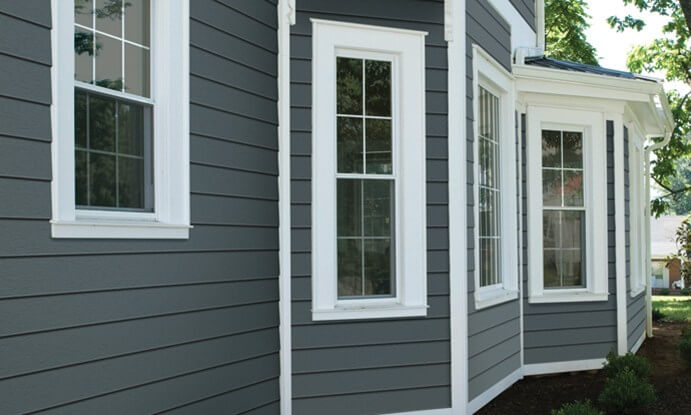Ever since its launch, HardiePlank siding (made of fiber cement) has established itself in the sidings market as a reliable and sensational product for protecting your home. This has been more so because of its durability and the advanced technology used to manufacture it. However, the company also clearly mentions that in order to get the most out of your investment in your HardiePlank siding, you need to follow certain guidelines.
We lay them out for you here:
Gutter & water management
If you happen to live in an area marked by high rainfall or thunderstorms, it’s imperative that you effectively manage the outflow of water accumulating from such natural vagaries for the entire house. This calls for the necessary installation of adequate and appropriate gutter and downspout systems in your home so that the water drains out and does not damage the plank siding.
Tips for cleaning & maintenance
If you have installed HardiePlank siding, here’s what you need to do for regular cleaning and
maintenance:
- Wash the exteriors once every six months with a low-pressure water jet or garden hose to eliminate all accumulated dirt and debris. Certain James Hardie cleaning products manufactured with ColorPlus technology may be used with water and a rag or a soft brush. Stubborn stains or dirt may be removed with a mild detergent and a soft brush.
- In case the surface is painted, refer to the paint manufacturer’s guidelines for cleaning and maintenance.
- Regular cleaning of the gutters, overflows, and blocked pipes is mandatory.
- Re-apply caulking and sealants when they begin to wear out. This prevents moisture from seeping into the cavity of the wall. These areas should also include flashings, penetrations, plank, & trim connections as also spaces between plank joints. Such sealants and caulking should be “permanently flexible” and must be mentioned on the packaging of the product. ASTM C920 Grade NS, Class 25-compliant Elastomeric Joint Sealants and ASTM C834- compliant Latex Joint Sealants work best in these cases.
- Make sure to apply the caulking and/or sealant in accordance with the products’ manufacturer’s instructions or according to ASTM C1193.
- Keep vegetation like bushes, shrubs, and small trees at a distance from the house and the siding. This prevents sprinkler systems from wetting the sidings.
- Ensure that 6” external ground clearance as also drainage slopes are regularly maintained.
- Don’t fill landscaping up to the siding.
- Sand blasting and high-pressure water blasts may damage the surface of the fiber cement product. Low pressure water sprays along with a soft, nonmetal, medium bristle brush is ideal for cleaning fiber cement products. Acid washing damages fiber cement surfaces and is, therefore, not recommendable.
- When using a pressure washer, take care so that the water stream doesn’t damage the siding surface. Using wide fan tips that are kept a minimum of 6 feet from the wall and at pressures under 1,500 psi will minimize the chance of damaging the siding.
Re-Painting Siding
If the siding was painted after installation in your home, check the paint manufacturer’s recommendations for reapplying paint. Also, don’t use stain on HardiePlank siding. Dents, cracks, and chips may be filled up with cement-based patching compound, particularly those that are fiber cement compatible which is what HardiePlank siding is comprised of.
Also ensure that the plank siding is not exposed to deicing salts, which may damage the finished look of the siding prematurely. Use gravel or sand for management of snow that comes near the siding. If you live in the southwest or in the southern part of America you do not have to worry about this. If you live north of this entire southern part of the US all the way up into Canada then snowy winters are something you need to think about.


